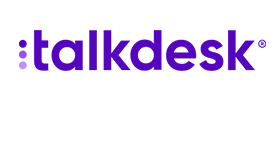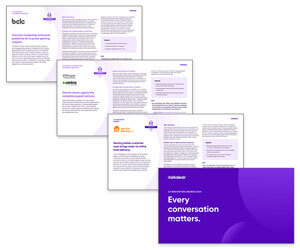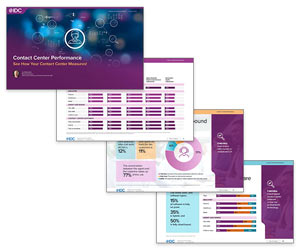Celia Cerdeira at Talkdesk explores how organizations can automate their contact centre operations to boost efficiency, empower agents, and improve the customer experience.
Customer service is the foundation of any successful business-and contact centre automation is revolutionizing how organizations deliver exceptional customer experience (CX).
By streamlining operations, enhancing agent performance, and personalizing interactions, automation helps businesses meet rising customer expectations with speed and efficiency.
A single positive interaction can transform a casual buyer into a devoted brand advocate. A staggering 96% of consumers say great experiences build loyalty, while 64% will abandon even favorite products after poor service.
The modern consumer expectation has shifted dramatically-80% now value their experience equally to the product itself.
To boost customer experience, businesses are turning to AI-driven automation-leveraging self-service tools, CRM systems, and omnichannel support to create seamless, responsive interactions.
What is Contact Centre Automation?
Contact centre automation refers to the use of technology – particularly AI and machine learning – to streamline and improve customer service operations.
Automation helps businesses resolve issues faster, cut down on costs, and reduce human error.
Customers get quicker, more personalized support, while agents can focus on solving complex problems instead of handling the same routine tasks over and over. In the end, it’s a win-win – happier customers, more productive agents, and a stronger business.
Here are some of the most common automation technologies:
- Self-service – AI agents help customers find answers and resolve issues on their own, reducing wait times and freeing up human agents for more complex inquiries.
- Intelligent call routing – Smart call routing ensures that customer inquiries reach the right agent or department based on need, availability, and past interactions.
- Live agent assistance – AI-driven tools provide real-time recommendations and customer insights to help agents deliver faster, more personalized support.
- CX interaction analytics – Advanced analytics track and analyse interactions across channels, uncovering trends and opportunities to improve service quality.
How Does Contact Centre Automation Work?
Contact centre automation combines agentic AI and machine learning to streamline interactions. AI-powered systems can understand customer intent, predict needs, and provide instant responses through self-service tools like AI agents.
Machine learning continuously improves these interactions by analysing past conversations, identifying patterns, and refining responses over time.
Meanwhile, automation assists live agents by offering real-time recommendations, providing customer sentiment analysis, and routing customers to the right resources very quickly.
Plus, automation tools can seamlessly integrate with existing customer relationship management (CRM), content management systems (CMS), and data aggregation platforms.
This connection ensures that AI-driven insights are based on real-time customer data, providing a more personalized experience.
For example, when a returning customer contacts support, AI can instantly pull up past interactions, purchase history, and support tickets, allowing agents to resolve issues faster.
What Are the Benefits of Contact Centre Automation Technology?
Contact centre automation technology offers a range of benefits that save time, reduce effort, and minimize risks – all while improving the customer experience. Here are some of the key ways contact centre automation enhances business operations:
- Agent productivity – Automation reduces repetitive tasks and provides real-time insights, allowing agents to focus on more meaningful interactions.
- Cost savings – Automating key processes helps reduce labour costs, improve efficiency, and optimize resource allocation.
- Better performance review – Contact centre automation collects and analyses agent performance data, offering managers deeper insights into coaching opportunities and areas for improvement.
- Sentiment analysis – AI-powered sentiment analysis tools assess customer interactions in real time, helping businesses understand customer emotions and adjust responses accordingly.
Beyond optimizing business operations, contact center automation plays a crucial role in collecting and analyzing interactions across multiple channels to uncover trends, measure customer satisfaction, and identify areas for improvement.
Consider these key ways in which contact centre automation directly improves the customer experience:
- Omnichannel outreach support – Automation ensures seamless customer interactions across multiple channels – phone, email, chat, and social media – allowing customers to engage on their preferred platform.
- Easy feedback – Automated survey delivery makes it effortless for businesses to gather customer insights, helping them refine service quality based on real-time feedback.
Improve First Call Resolution (FCR) Rates
First contact resolution (FCR) measures a company’s ability to resolve customer issues during the first interaction, whether it’s over the phone, email, or chat.
Contact centre automation helps by making sure customers reach the right resource from the start. AI-powered call routing connects them to the best-fit agent or self-service tool, reducing unnecessary transfers and callbacks.
Automation also gives agents real-time insights, suggested responses, and instant access to knowledge bases, so they can provide accurate answers faster. The result? Faster resolutions, smoother interactions, and a better overall customer experience.
Implementing Contact Centre Automation in Four Steps
Successfully automating a contact centre requires a thoughtful approach to ensure a smooth transition and maximum impact. Consider this four-step process to help implement automation smoothly.
Assess Current Operations and Identify Gaps
Before introducing automation, organizations need to evaluate their current contact centre performance.
Analysing key metrics like first call resolution rates (FCR), average handle time (AHT), and customer satisfaction scores (CSAT) can help pinpoint inefficiencies and areas where automation can make the biggest difference.
Identifying frequent customer pain points and repetitive agent tasks will help prioritize the right automation solutions.
2. Choose the Right Automation Tools
Not all automation solutions are one-size-fits-all. Businesses should select tools that align with their specific needs, whether it’s AI-powered agents for self-service, intelligent routing to improve inquiry handling, or real-time agent assistance to enhance productivity.
Integration with existing CRM, CMS, and data platforms is also crucial to ensure seamless automation without disrupting workflows.
3. Implement Gradually and Train Agents
A phased rollout is often the best approach to minimize disruption. Organizations can start by automating simple tasks like FAQ responses and then expand to more advanced AI-driven support.
Training agents on how to work alongside automation tools is key – when agents understand how to leverage AI-powered insights and recommendations, they can provide even better customer service.
4. Monitor Performance and Optimize Over Time
Automation isn’t a set-it-and-forget-it solution. Businesses should regularly track performance metrics to see how automation is impacting efficiency and customer satisfaction.
AI and machine learning improve over time, but continuous monitoring and adjustments help ensure the system is always aligned with customer needs. Collecting agent and customer feedback also helps fine-tune automation for long-term success.
Emerging Contact Centre Automation Trends to Monitor
Contact centre dynamics are always changing, and looking to the future is essential to staying ahead. Here are five contact centre automation trends that will reshape the industry in 2025.
AI For Customer-Centricity
The first trend reshaping contact centres is the growing emphasis on customer-centricity. Leveraging natural language processing (NLP) and AI, businesses can better understand customer sentiment and address ongoing issues.
One tool at the forefront of this trend is interaction analytics. This AI-powered solution captures, transcribes, and analyses every customer interaction, identifying key conversation moments, topics, and sentiments.
It provides valuable insights into customer intent and uncovers trends that help businesses improve their customer journey.
Human-AI Collaboration
AI-powered agent assistants are transforming customer service by providing real-time support that helps agents work smarter and faster.
AI also reduces after-call work (ACW) – a traditionally time-consuming task – by automatically summarizing customer interactions, capturing key details such as intent, outcome, disposition, and next-best actions. This can save agents 30 to 60 seconds off their after-call work with just one click.
These call summaries also serve as critical information for the next agent who may engage with the same customer, ensuring that the context and history of past interactions are easily accessible.
Automated Interaction Scoring
AI-powered automated interaction scoring is a game-changer for quality assurance, streamlining evaluations, and making feedback more effective.
QM Assist enhances traditional quality management with AI and speech analytics, reducing manual work so managers can focus on coaching agents.
Predictive Analytics For Optimized Scheduling
Predictive analytics in workforce management tools to optimize scheduling is a trend that is rapidly gaining momentum.
These data-driven schedules consider factors like employee availability, business needs, and historical activity patterns to make accurate predictions and recommendations.
AI-powered algorithms analyse large volumes of data so organizations can accurately forecast workforce needs and optimize staffing decisions.
For example, scheduling features in advanced workforce management tools, such as Workforce Engagement Management, ensure the right number of skilled people are in the right place at the right time to meet customer demand.
This blog post has been re-published by kind permission of Talkdesk – View the Original Article
For more information about Talkdesk - visit the Talkdesk Website
Call Centre Helper is not responsible for the content of these guest blog posts. The opinions expressed in this article are those of the author, and do not necessarily reflect those of Call Centre Helper.
Author: Talkdesk
Reviewed by: Jo Robinson
Published On: 6th May 2025 - Last modified: 15th May 2025
Read more about - Guest Blogs, Celia Cerdeira, Talkdesk






 Talkdesk is a global customer experience leader for customer-obsessed companies. Our contact center solution provides a better way for businesses and customers to engage with one another.
Talkdesk is a global customer experience leader for customer-obsessed companies. Our contact center solution provides a better way for businesses and customers to engage with one another. 

































